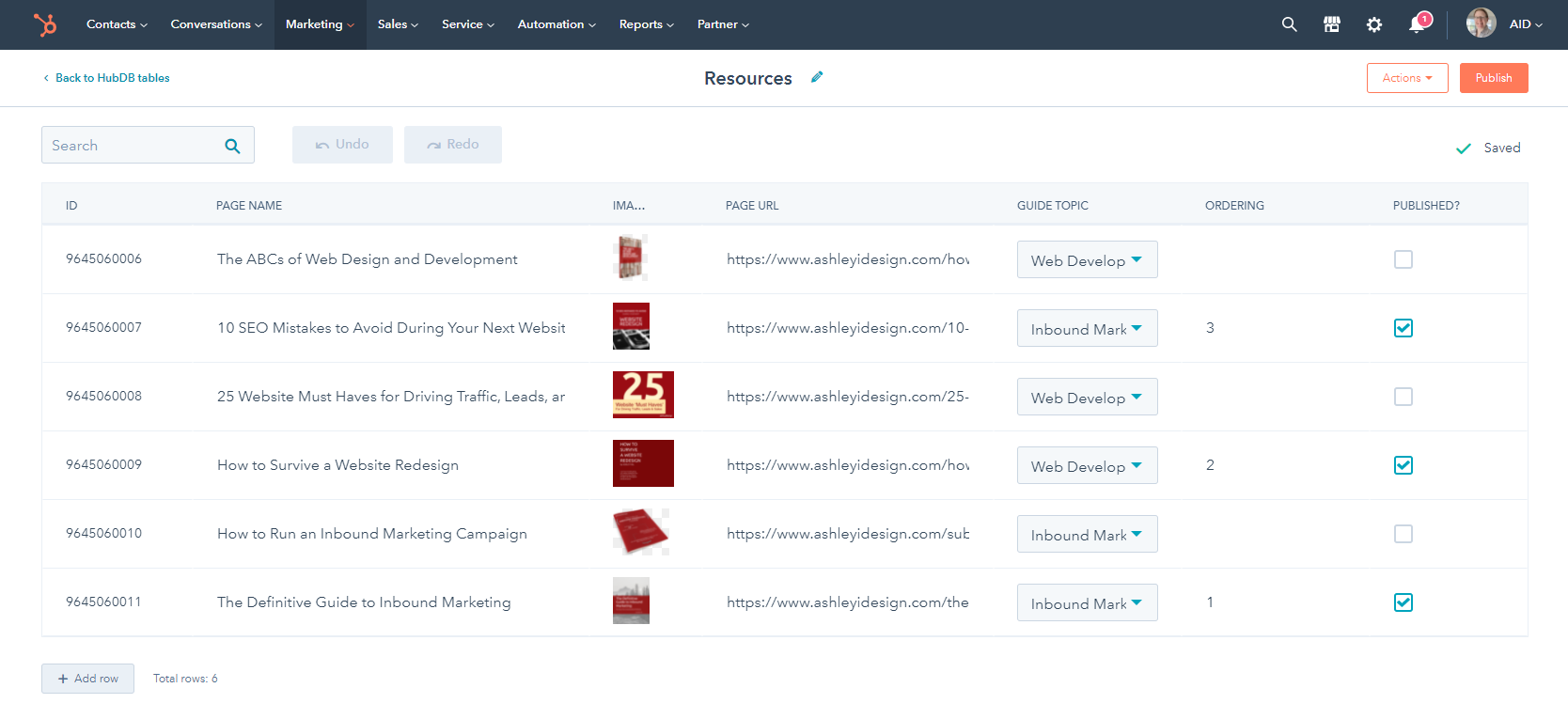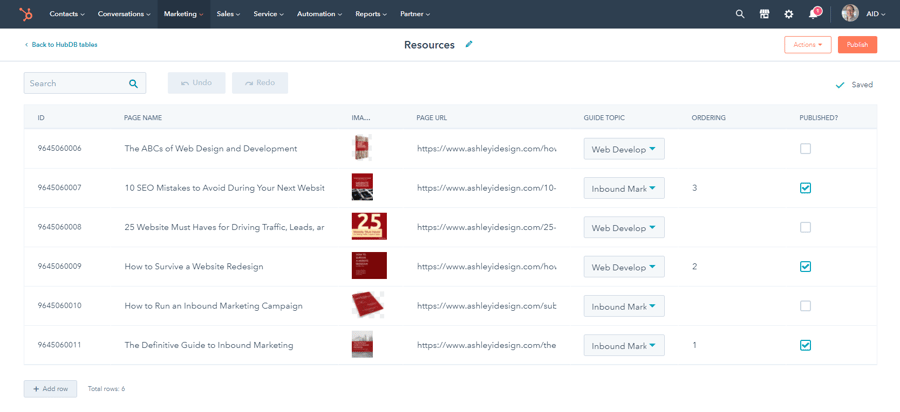
Benefits to and Examples of Using HubSpot's HubDB
When trying to display content on a website page with repeatable layouts, such as team members, or links to resources, it makes sense to use a system that allows you to quickly add items as needed instead of messing with the layout of a page. This is where HubSpot’s HubDB steps in.
The way I explain the HubDB to clients is this: it’s essentially a spreadsheet you can add rows to, or import an Excel file into, that holds data I can then pull into a website page with custom modules. The actual development work is within the module, not on the page, and not in the database. This means that anyone on your team can update the content without looking at code.

An example of a HubSpot HubDB, in this case for my resources page.
The HubDB can hold data such as rich text, images, URLs, checkboxes, and more, which can be used to display the content on a website page.
I worked on a recent project for a team page, with a popup when you click on someone’s image. All of the content for a person: photo, name, title, biography, and Linkedin URL, are within the database. The custom module I created displays that content for a page and includes everything needed for that popup to work.
Another example is for displaying resources. The power of the HubDB means that filters can be created, so someone can choose what content they want to be displayed, either in the backend settings for the module or in the front end for website visitors to show a specific category.
I’ve built resources databases that hold links for webinars, podcasts, downloadable guides, and more. When someone visits the resources page, they can choose what to look at. Everything can be ordered automatically by date, so the newest is always at the top.
A final example of the HubDB I’ll share is for displaying events. When your company has a lot of events you’re attending or hosting, even those on Zoom, it’s essential to have a centralized location where people can register for them. Something that can be done via the HubDB is not only sorting the events by the date they’re going to run but also automatically moving events from upcoming to past, based on the date in the HubDB.
If these examples of using the HubDB sound like something you’d like to pursue, HubSpot has a great resource to get you started.
Or, if you’d instead not learn how to code for the HubDB, just get in touch, and we can chat about what makes sense for your site.
I help businesses and marketers build marketing and sales systems that drive leads and scale with ease.
Not sure where to start? Take my marketing quiz and get personalized next steps.



